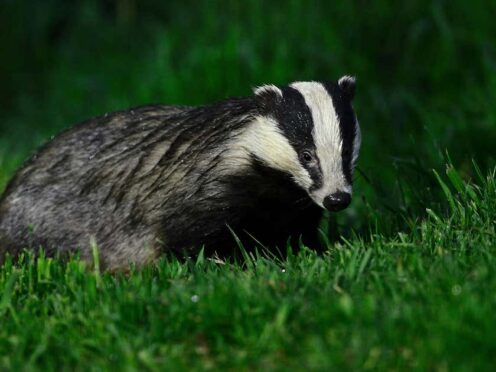Targeted badger culling could continue in high-risk areas where it is needed to control tuberculosis in cattle under plans set out by the Government.
Intensive multi-year culls of badgers to curb bovine tuberculosis (bTB) – which can spread between the wild animals and cattle – in swathes of England are being phased out, with the existing policy due to end by January 2026.
In a new consultation on what comes next, the Environment Department (Defra) has said targeted badger culling would remain an option where there is evidence to support that it is needed.
This would be focused on “hotspots” within the existing high risk and edge areas (buffer zones), which includes much of southwest and central England, where there are high levels of infection in cattle and evidence suggesting badgers are part of the local disease problem.
The targeted culling would continue until the disease situation has improved, based on an annual review by the UK’s chief veterinary officer, Defra said.
Under the plans, badger vaccination would then be used to ensure the reductions in disease achieved by culling are maintained.
Defra said the Government’s strategy to control the disease, with intensive and supplementary culling, had seen new bovine TB cases at a near 20-year low.
The first 52 areas where badger culling was conducted show a reduction in rates of TB in herds on average by 56% after four years of culls.
But culling has been controversial, with wildlife and animal welfare groups criticising the killing of tens of thousands of badgers – a protected species, warning the methods permitted are inhumane, and calling for focus on cattle controls and vaccination for livestock and badgers.
Under the new plans, it would be a requirement of the culling licence for farmers to deliver badger vaccinations once the chief vet has decided that culls should end, with funding, training and monitoring advice provided by Government.
It is envisaged the targeted culling would cover clusters of farms where there is a high level of TB, rather than localised farm-level culling in reaction to an outbreak – which can actually worsen the disease as it prompts badgers to move about more and spread it to new areas.
Defra said the new strategy built on its investment in wider-scale badger vaccination, which now has more farms involved in vaccination programmes than ever before, including in areas where culling has ended.
Environment Secretary Steve Barclay said: “Bovine TB has taken a terrible toll on farmers, leading to the loss of highly prized animals and, in the worst cases, valued herds.
“There are no easy answers in the battle against TB, but badger culling has proved highly effective and needs to remain a key part of our approach.
“Our strategy has led to a significant reduction in this insidious disease, which we will continue to cull in areas where the evidence confirms it is required, as well as making use of vaccinations.”
UK chief veterinary officer Christine Middlemiss said: “Our strategy to eradicate bovine TB in England is turning the tide on this disease with the lowest number of new bTB breakdowns in nearly 20 years.
“We are making good progress to eradicating the disease by 2038 as we have committed to do.
“The proposals set out today will ensure this downward trend continues, and all culling decisions taken under the new targeted approach will continue to be led by the very best scientific and epidemiological evidence.”
The consultation also looks for views on publishing more information about animal and herd level bTB risk, such as the most recent test completed in the herd, to help those purchasing cattle to factor in risks when buying new animals.
Jo Smith, chief executive of Derbyshire Wildlife Trust, said the charity was disappointed that there were proposals to continue badger culling.
“We understand the hardship that bTB causes in the farming community and the need to find the right mechanisms to control the disease.
“England’s cattle-to-cattle disease transmission problem must be urgently resolved through cattle-focused measures such as improved cattle testing and vaccination, enhanced biosecurity, and controlling cattle movements.
“We urge the Government to stop badgers being killed for good and prioritise funding and resources on cattle-based measures instead.”
